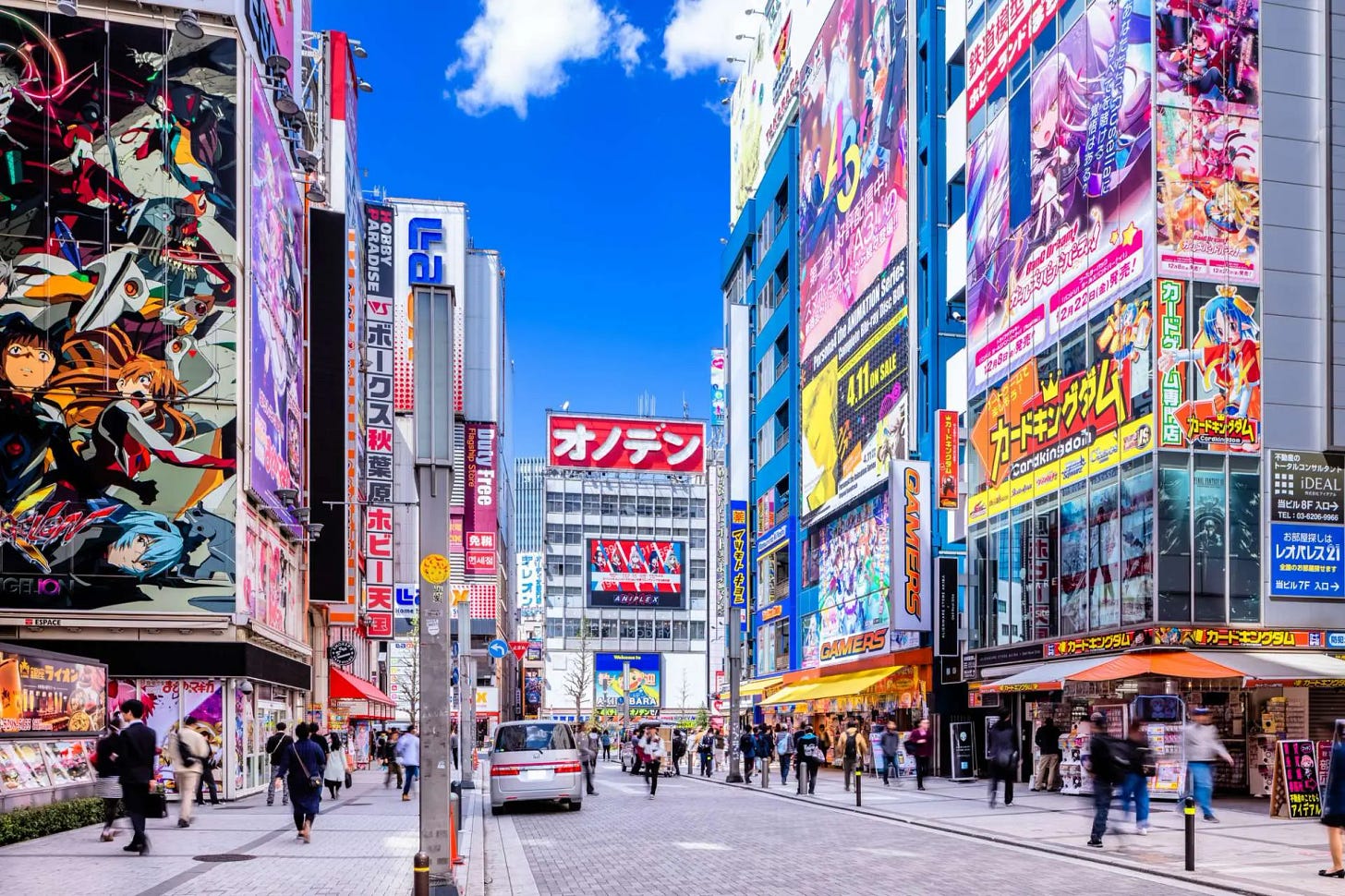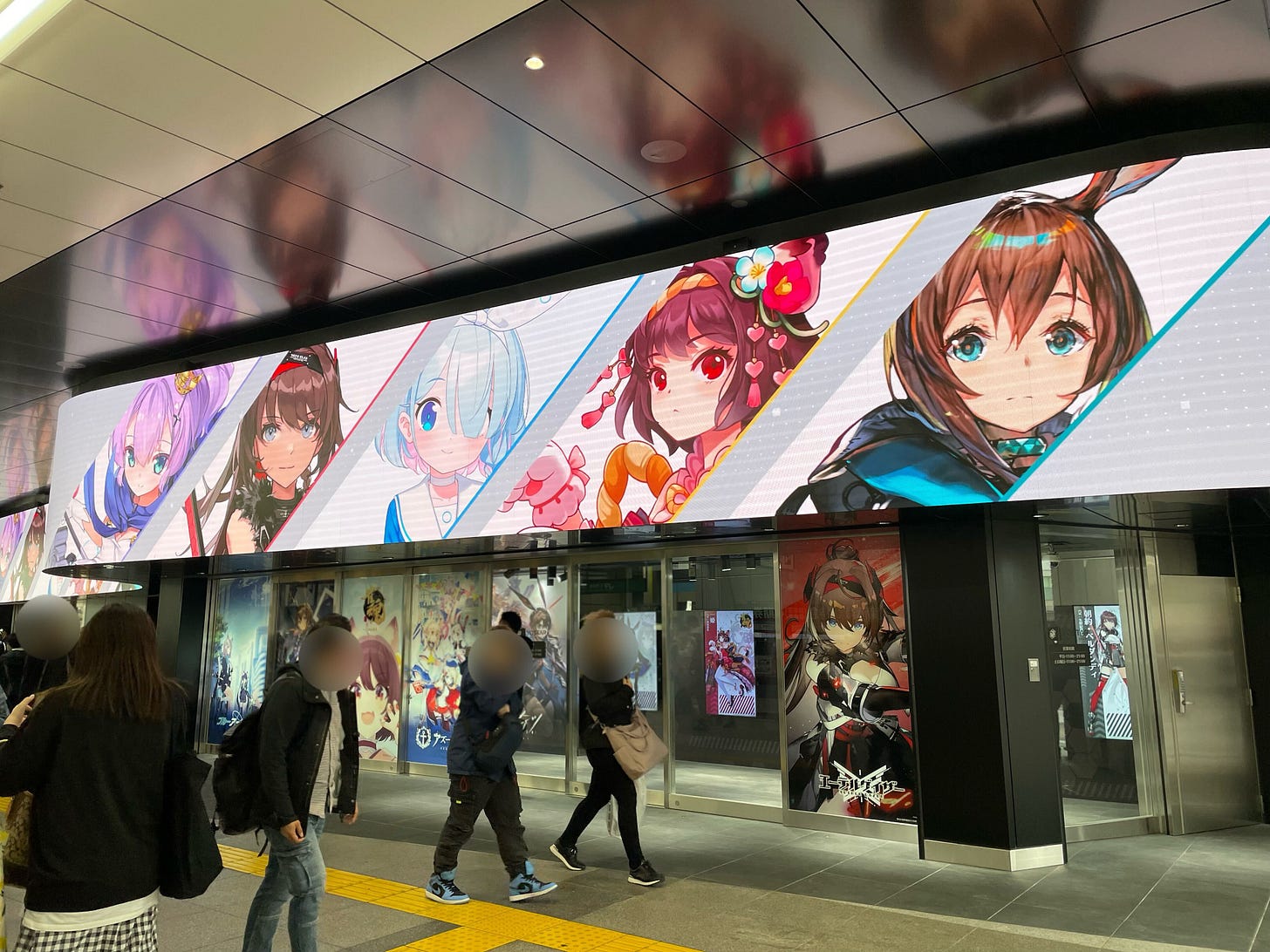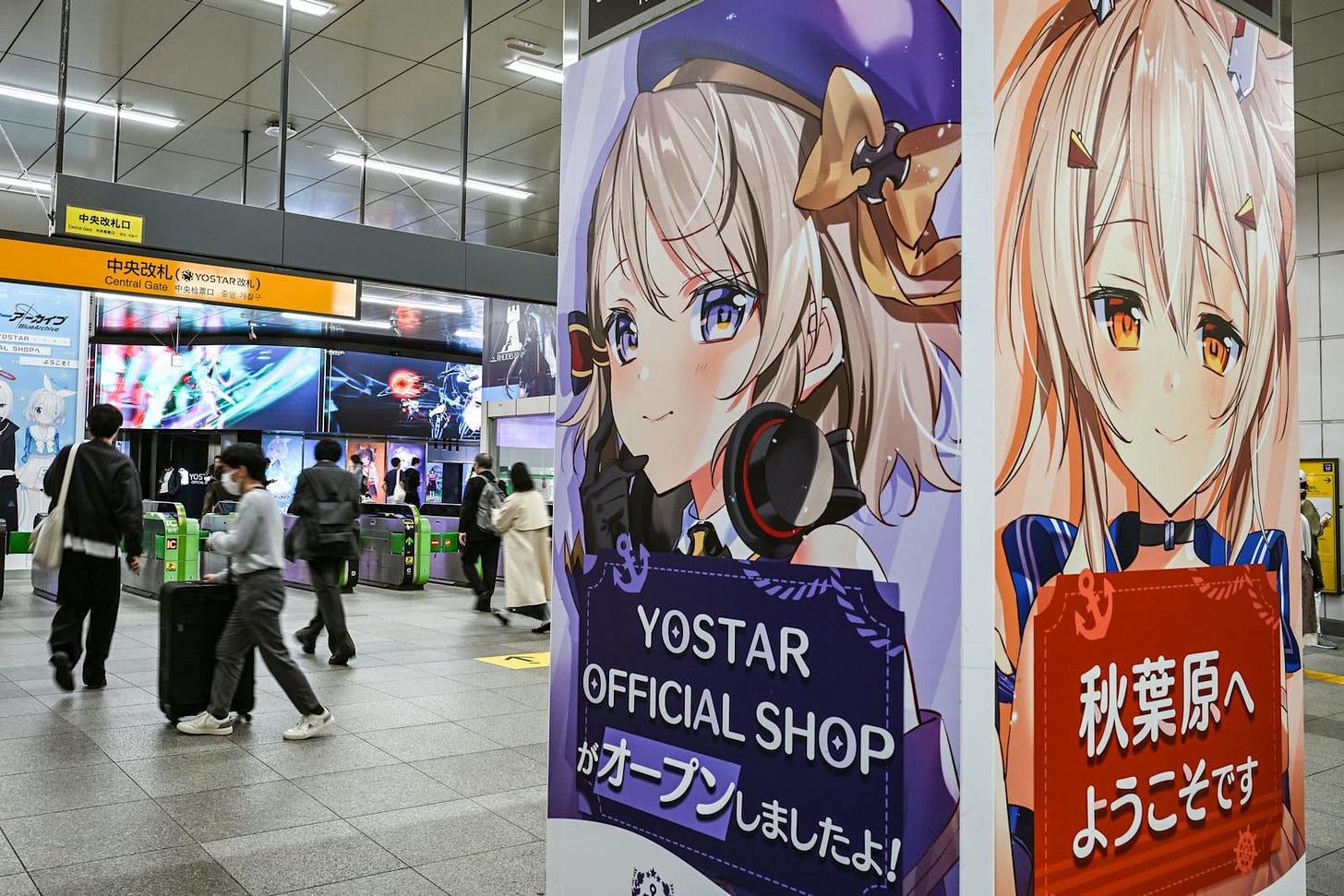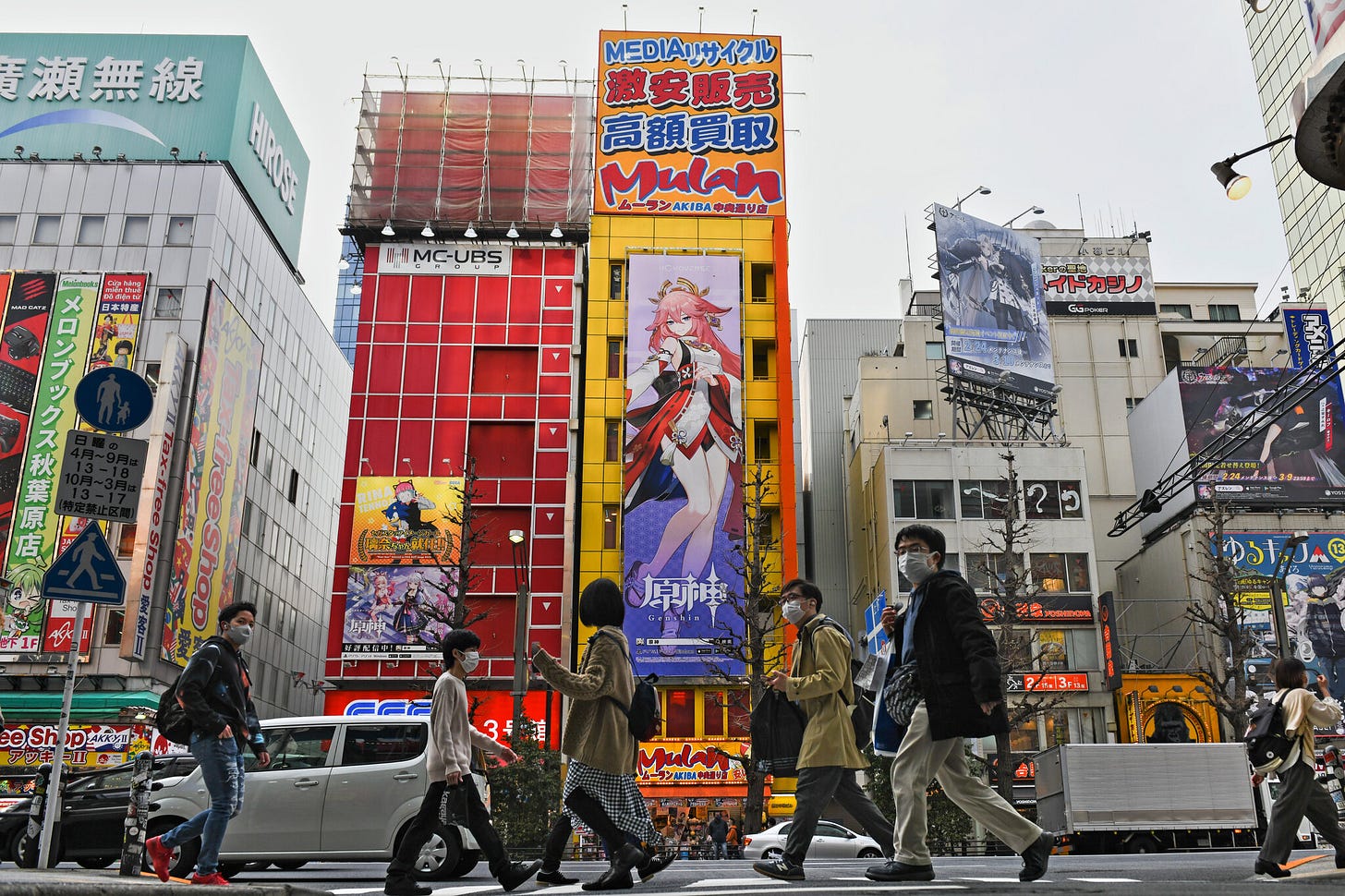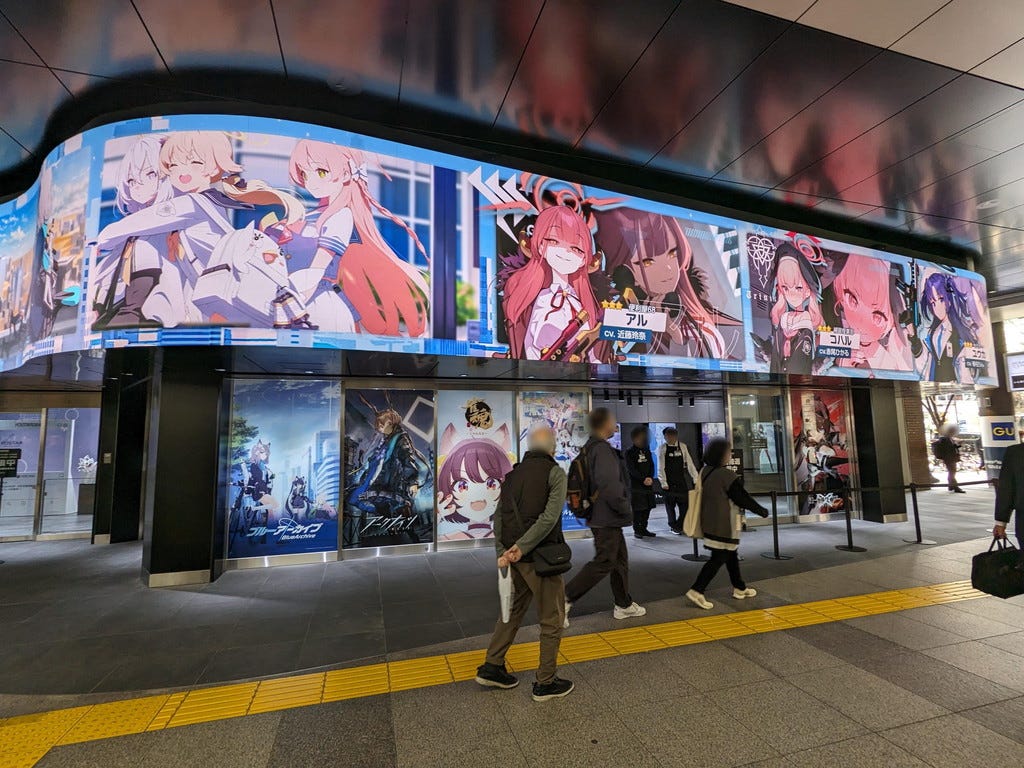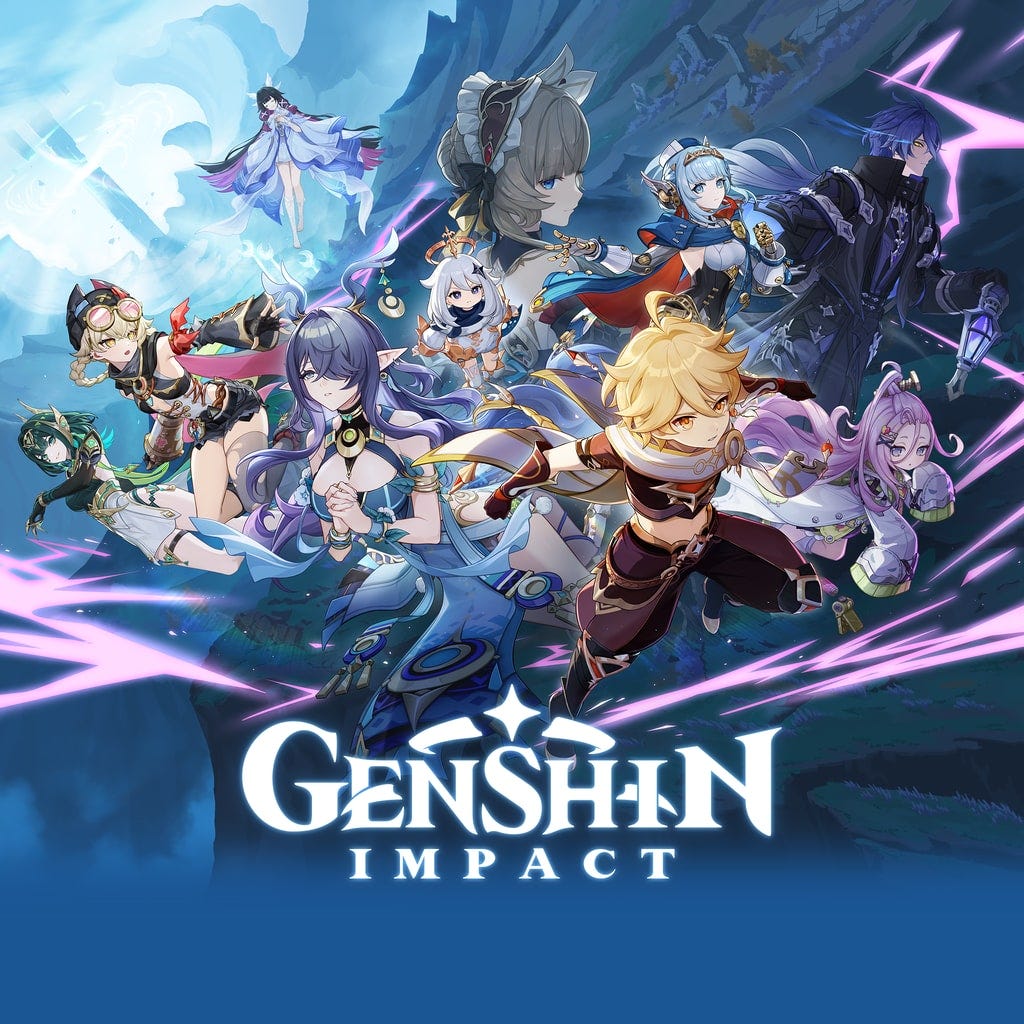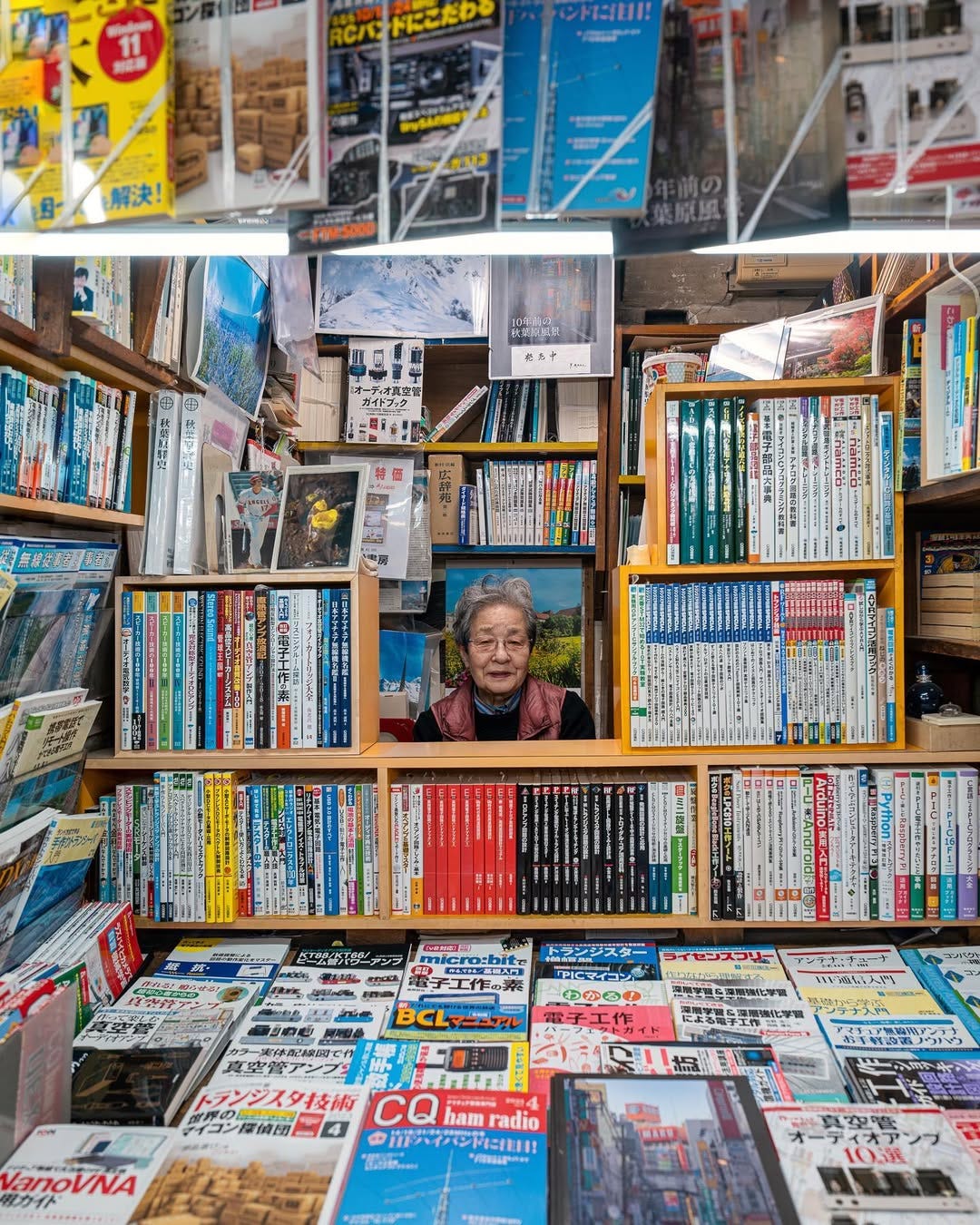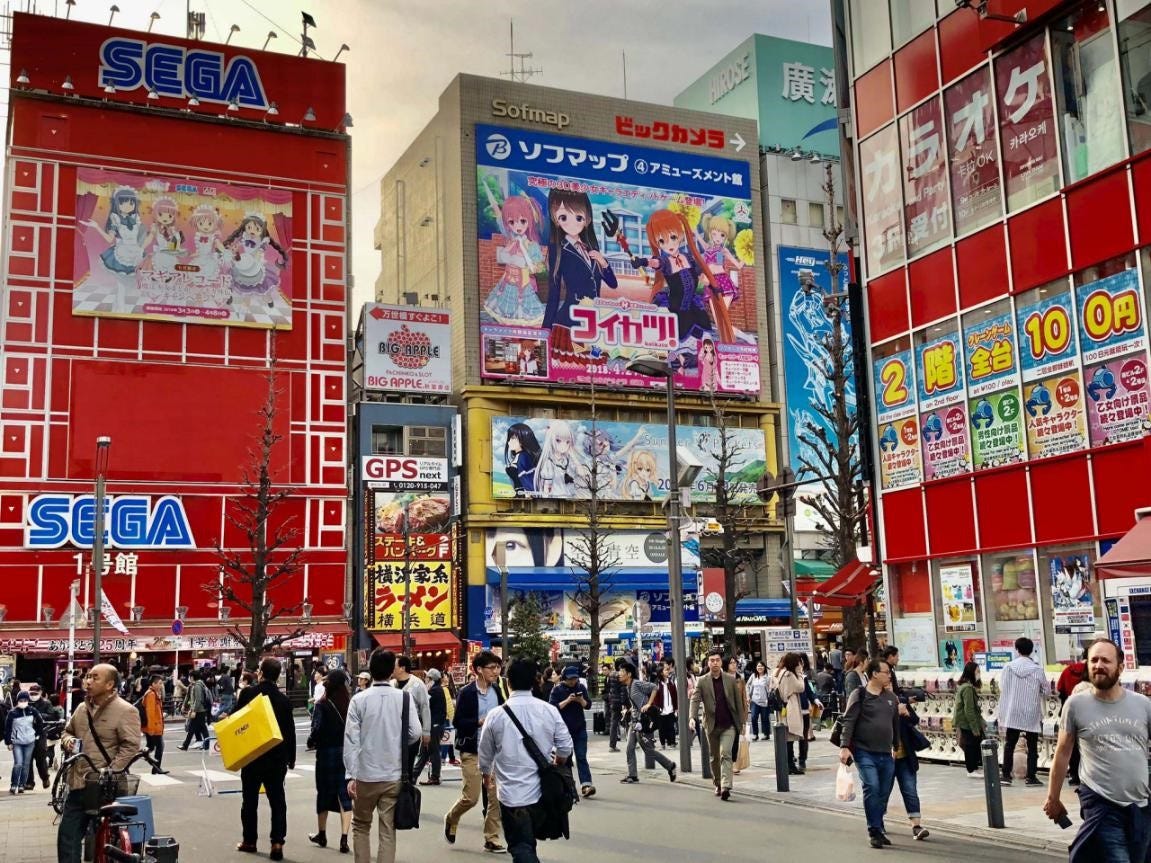Akihabara’s Chinese Takeover: How China’s Game Giants Are Redefining Japan’s Otaku Capital
Japanese pop culture news edited by Patrick Macias
Akihabara, once the uncontested heart of Japan’s anime and gaming culture, is being transformed by Chinese influence.
Major Chinese developers like Yostar and miHoYo (HoYoverse) now dominate advertising, sales, and local fandom.
Bold investment, rapid decision-making, and global ambition are helping China outpace Japan’s more cautious companies.
From Otaku Paradise to China’s Billboard Showcase
Akihabara, long celebrated as Japan’s “holy land” for anime and games, is changing rapidly. The neon billboards, gaming ads, and shopfronts that once reflected Japan’s creativity are now filled with Chinese imagery. At JR Akihabara Station, anime-style girls beam from giant digital screens greeting more than 200,000 daily passengers. Yet most of these ads are not from Japanese companies. In spring 2024, a newcomer from Shanghai announced it would “take over Akihabara Station’s central gates.” That company is Yostar, known in Japan for mobile hits like Azur Lane and Blue Archive. Its 30-meter video walls fill the station with bright visuals, and its ad budget reportedly exceeds 300 million yen (about 2 million USD) per year.
Yostar’s Rise and Loyal Fans
JR East has been redesigning major stations into “business creation hubs” that combine large screens with retail areas. For Akihabara, Yostar was chosen as the first featured partner to match the district’s pop-culture image. “Yostar’s characters are the cutest, and the game quality is just as good as Japan’s,” said 22-year-old university student Naritaka Yoshida, who visited Yostar’s store inside the station. Since discovering the company’s games two years ago, he admits he has been completely hooked.
China’s Hidden Presence Across Akihabara
Strolling through Electric Town, it is impossible to miss the change. Huge billboards for Genshin Impact, developed by Shanghai-based miHoYo (now HoYoverse), dominate the skyline. The fantasy RPG’s lush visuals and worldbuilding have won over Japanese players. Many of Akihabara’s colorful anime billboards are now funded by Chinese studios. Casual visitors would never guess that much of the area’s advertising is Chinese. What was once Japan’s uncontested stage is now shared by China’s booming entertainment industry.
The Numbers Tell the Story
Mobile data from NTT Docomo Insight Marketing shows how deeply Chinese visitors and brands are embedded in Akihabara. In July 2024, around 5,000 visitors from China were in the area each day, five times more than from South Korea or the United States. For many Chinese fans, Akihabara symbolizes freedom. “In China, the firewall limits what we can watch,” said Cheng Zixuan, a 24-year-old student from Sichuan Province. “Here, anime is open to everyone. I want to live and work in Japan after I graduate.”
When Japan’s Game Industry Looked to China
Veteran Japanese developers say the turning point came with Genshin Impact in 2020. “Everyone was shocked,” recalled one planner with 15 years of experience. “Genshin Impact was visually stunning, and it had its own originality. We realized Chinese studios had caught up.” He once earned 8 million yen (about 54,000 USD) a year at a major Japanese studio, but when he joined a Chinese developer, his salary nearly doubled to 15 million yen (about 101,000 USD). “Chinese companies paid for travel and research costs freely,” he added.
Why China Is Winning
Chinese developers frequently hire Japanese artists, writers, and voice actors to ensure authenticity. They study Japanese storytelling and then refine it. For them, a 10 billion yen (about 67 million USD) budget for a new game is standard practice. Japanese companies rarely spend that much unless it is a sequel to a proven hit like Dragon Quest or Pokémon. “A brand-new title costing 10 billion yen is almost unthinkable in Japan,” the planner said. This boldness gives China a growing edge in creativity and market share.
Data Shows Japan Falling Behind
According to research firm Sensor Tower, of Japan’s top 30 mobile game apps in 2024, only 16 were from Japanese developers. Chinese firms occupied 11 of the remaining slots. Genshin Impact alone surpassed 10 billion USD (about 1.5 trillion yen) in Japanese revenue within two years of release. Creator Cai Haoyu’s fortune now exceeds 7.3 billion USD (about 1.1 trillion yen), placing him among China’s wealthiest entrepreneurs.
The Last of Old Akihabara
Some traces of the old Akihabara remain. Beneath the train tracks, small electronics and book shops continue to survive. Inside the aging Akihabara Radio Center, 89-year-old Kazuko Shimotori runs Mansei Shobo, a shop specializing in radio and engineering books. “My father opened this store over 70 years ago,” she said. “But customers got older, and books stopped selling. Everyone buys online now.” Surrounded by new buildings, she plans to close by year’s end. “I will be 90 soon. It’s sad, but it cannot be helped.”
The New Face of Akihabara
Akihabara’s transformation mirrors a larger cultural shift across Japan. Once a symbol of domestic creativity, it has become an international showcase for Chinese games, investment, and fans. The Electric Town that once powered Japan’s postwar dreams now glows with the energy of Asia’s entertainment empires. Whether Japan can reclaim its creative leadership or embrace its new global identity remains to be seen.



